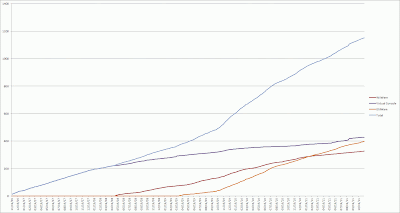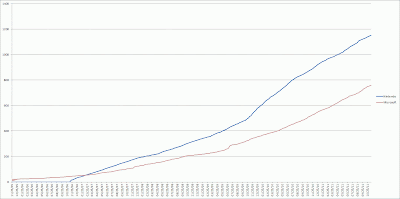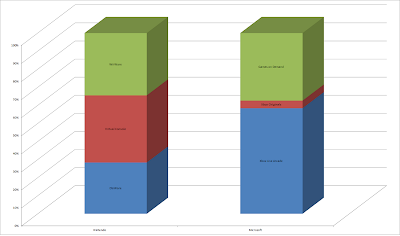I like to think of myself as having been a Nintendo fanboy since at least 1991, and I still prefer my Nintendo consoles to my others, for various reasons. But what’s been bugging me lately is their library. Not their new releases, which we all know are somewhat limited. No, it’s their overall library on the Wii and 3/DS/i that I’m talking about, specifically the digitally-distributed sort.
Nintendo started off the Wii launch with its most promising venture–its entire collection of previously-released games. The Virtual Console, paired with the Wii Shop Channel, opened the door for classics of all shapes and sizes to pour through the floodgates, bringing a wave of nostalgia to longtime fans–and bringing some dejected oldies to the attention of a new generation of players.
But as of right now those floodgates remain in a rather unfortunate state. Of late I’ve noticed a distinct lack of new releases on either the Wii Shop Channel or the eShop on the 3/DSi. Okay, I noticed it several months ago, but this time I decided to run some numbers. They don’t make for a great outlook.
 |
| Total Nintendo Download Releases. |
At present, 392 games are available on the Wii’s Virtual Console service. This amounts to roughly 3 new games every two weeks since the first games were pushed out on November 19, 2006. This doesn’t seem so bad in the end–400 games is a lot to choose from. But this is paltry compared to the vast libraries Nintendo has built in the past three decades. Just counting the NES, SNES, and N64, about 1,958 games have been released over the (many) years, depending on where you get your list. This number is highly debatable, and it is impossible to build a comprehensive list of all releases, so I will round down to 1,900 to be safe. Out of this number, Nintendo has tapped a mere 20% of the product pool, as it were. But that’s not the entire library, either. Games for the Master, Genesis, TurboGrafx, Neo Geo, Commodore 64, and arcade machines have also been made available. While it is impossible to account for all games released on the last two platforms, all the other systems total a count of nearly 3,500 games. This reduces VC’s library to a mere 11% of its total potential.
The Virtual Console has also been made available on the 3DS Shop. Game Boy, Game Boy Color, and NES games have been pushed to the platform, but so far less than fifty titles are available. The GB and GBC alone open the possibility for over 1,100 games. I’m hoping they see more potential in it than they have previously.
Moreso than this, Nintendo has neglected some of the aforementioned systems on the 3DS Shop. The Master, Genesis, and SNES would work beautifully on the 3DS–in fact, I would be far more likely to play SNES games on the 3DS, because I’m not keen on using the Classic Controller with my Wiimote. Interestingly, the Virtual Boy could also be implemented on the 3DS, making use of the true 3D screen, and possibly even with full-color graphics. This is something I would like to see Nintendo do (but that’s a very long list).
 |
| Note: This chart does not include PSN. |
Now for the damning comparison. Nintendo’s efforts have foundered compared to its two noncompetitors. While Microsoft has made fewer overall games available on Xbox Live, the most original titles are seen there. PSN features the fewest original works, possibly due to the burden of cost being shifted to the developers, but Sony has made oodles of games available for download via the service. The chart below visualizes the release rate for Nintendo and Microsoft only. Sony is not accounted for, since virtually all PSP games, a vast proportion of PS3 games, and considerable original titles are available for download. In addition, TurboGrafx and Neo Geo games are available on PSN, in greater numbers than what Nintendo has to offer, along with Dreamcast games.
 |
| A little perspective. |
While the graph shows Nintendo in a solid lead over Microsoft, it’s worth noting Microsoft has released fewer than 40 of its original Xbox games on Live. Both Xbox Live and PSN are making much more headway with original works, and have fostered better connections with indie developers. While is isn’t surprising given Nintendo’s history with third party developers, that doesn’t make it any less dismaying. Nintendo is only leading the pack with sheer numbers of regurgitated titles, instead of working with independents to help create innovative and quirky motion-controlled (or 3D) games that could revitalize their catalogue.
If Nintendo’s long-term strategy is to lean on its golden oldies, so be it. But they better grab an oar and start paddling, because the propeller has long since given out. If not, they better start building a whole new boat, and set sail post haste, because their rivals have seen much more ocean.